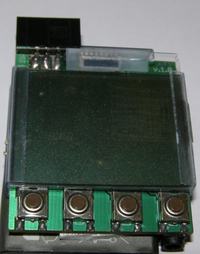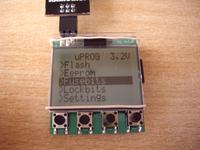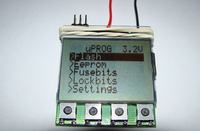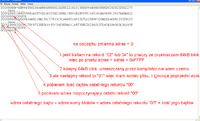You could do the option to automatically set the fusebits before programming - the point is that if there is a 16MHz quartz on the plate, let the process be programmed using a quartz clock and not the internal 1MHz generator.

Czy wolisz polską wersję strony elektroda?
Nie, dziękuję Przekieruj mnie tamtksk2 wrote:Or maybe after calling write, read, verifi, and in the same window "delete" and after pressing it will expand the list of files? Followed by selection and "ok."
J_Bravo wrote:And how is the work with the automatic setting of coffee grounds after programming the processor going? Will it be possible?
leonow32 wrote:You could do the option to automatically set the fusebits before programming - the point is that if there is a 16MHz quartz on the plate, let the process be programmed using a quartz clock and not the internal 1MHz generator.
leonow32 wrote:You could do the option to automatically set the fusebits before programming - the point is that if there is a 16MHz quartz on the plate, let the process be programmed using a quartz clock and not the internal 1MHz generator.


manekinen wrote:So far, I haven't had when, but if it's easy to do, of course, why not Smile
narasta kilka stron temu wrote:When it comes to manually setting FuseBits, I think it would be best to enter them character by character in the hex, i.e. first select the first character (two buttons up and down) and then the next one and we have the whole fuse.



tmf wrote:Have you ever thought about inserting a dataflash memory instead of an SD card and adding USB support? IMHO, a few GB is useless to me, because a reasonable amount of batches can be put in a few MB, while it is quite troublesome to transfer hexes to SD and then insert the card into the programmer. Yes, it would be enough to plug it in and just lose. If it was still seen in the computer as USB Mass Storage, it would be a fairy tale. Note that this solution (USB connection) has one more advantage - this programmer could be used as an ordinary ISP programmer controlled e.g. from AVR Dude and as an independent programmer in the field.
tmf wrote:Second idea - for hexes, the contents of FLASH, EEPROM and coffee grounds must be separate. In turn, the elf structure is too complicated to handle them in a microcontroller, but all HEXs can be glued together, assuming, for example, that FLASH starts with 0x0000, EEPROM from 0x100000, coffee grounds from 0x200000. Then there is only one file containing everything. Such a file is easy to generate by slightly modifying the makefile using the objcopy tool.
krzycho123 wrote:unfortunately, the glue I wrote about, although it was for ceramics, released after 2 days from the glass
manekinen wrote:Such things are not in bascomAnd not on such a small prock. But a great idea, instead of a flash memory, leave the good uSD card - and the device could work with it as a portable drive. The option in the menu or holding down the button select whether the device reports as a disk - or as a programmer. If the latter, the display also shows programming details, but this is done from the computer. And that it also supports PDI and TPI. You can dream
tmf wrote:Well, in Bascom you can dream it, but if you want to switch to C, I will be happy to help you and I can transfer some fragments to you, e.g. menu, programming, etc.
As for USB, it is easy to do it, for example on the ATMega U2 series, which have a hardware USB device, and there are mass storage devices. Or give it up and throw in the good FTDI. The costs are small, and such a programmer would be really great. There is also no need to switch anything, because a USB device can report itself as several classes at the same time.
tmf wrote:As for hexes, gluing is simple, even a simple combination of two files will work, worse with coffee grounds. On the other hand, if you think about operating an elf, you are really taking a hoe to the sun. libelf is a dozen or so kB of source code.
tmf wrote:However, if you want, I can give you my HEX implementation (it is true for PC, but it can be easily transferred to AVR)
kaeltaz wrote:If you are low on memory you can always employ atmege128
tmf wrote:On the other hand, you have to anyway, because what if the amount of data is in memory, since it is addressed outside the range of addresses for a given type of processor. So you have to check all the records.

tmf wrote:By the way, you can also check if the hex itself is correct by preliminary parsing it and checking if the CRC of the records is correct.
